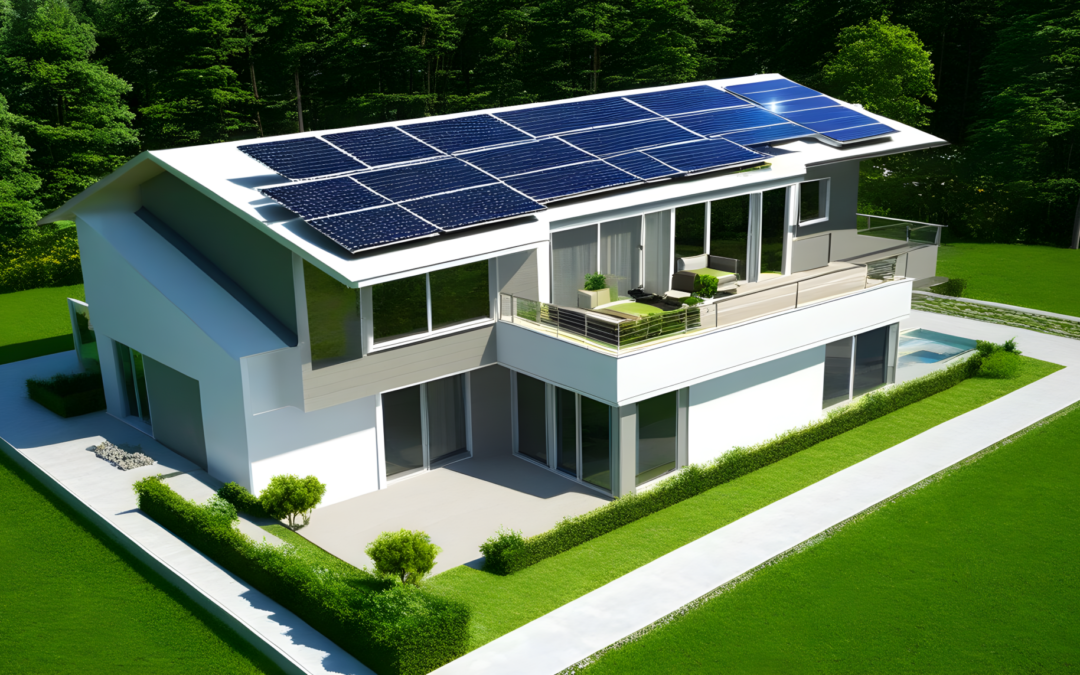Millennials and Gen Z are not just the largest generations globally, they are also the most environmentally conscious to date, and their values are fundamentally reshaping the real estate market in 2025. For these digital natives, sustainability is not a fleeting trend but a core lifestyle choice, deeply influencing their purchasing decisions for homes and rentals. In Africa, where issues like energy access, water scarcity, and climate resilience are particularly pressing, eco-friendly housing features hold even greater weight for young buyers.
Here’s what Millennials and Gen Z are prioritizing in eco-friendly housing:
1. Energy Efficiency & Renewable Energy (The Absolute Must-Haves)
This is consistently at the top of their list, driven by both environmental concern and, crucially, a desire for lower utility bills.
- Solar Panels & Inverter Systems: With rising electricity costs and the prevalence of power outages (like “load-shedding” in South Africa or general grid instability in many African nations), young buyers are keenly interested in homes with solar panels or inverter systems for energy independence and significant long-term savings. They want reliability and reduced reliance on expensive, often carbon-intensive, national grids.
- Energy-Efficient Appliances: Appliances with high energy ratings (e.g., Energy Star equivalent) for refrigerators, washing machines, and HVAC systems are non-negotiable. They understand these contribute directly to lower monthly expenses.
- Smart Thermostats & Lighting: Integration of smart home systems that optimize energy consumption (e.g., smart thermostats that learn routines, automated lighting that adjusts to natural light or occupancy) is highly valued for both convenience and cost savings.
- Superior Insulation & Efficient Windows: High-performance insulation and double-glazed windows (where appropriate for climate) are sought after for their ability to maintain consistent indoor temperatures, reducing the need for excessive heating or cooling.
2. Sustainable Materials & Healthy Indoor Environments
These generations are increasingly aware of the impact of building materials on both the planet and their personal health.
- Eco-Friendly Building Materials: A preference for homes constructed with sustainable, recycled, or locally sourced materials like bamboo flooring, reclaimed wood, recycled glass countertops, and non-toxic, low-VOC (Volatile Organic Compound) paints. This aligns with their values of environmental stewardship and often provides a unique, modern aesthetic.
- Excellent Indoor Air Quality: Features like advanced ventilation systems, air filtration, and designs that maximize natural airflow are crucial. They want homes free from allergens, toxins, and pollutants, contributing to better overall health and well-being.
- Natural Light & Biophilic Design: Homes that maximize natural light through thoughtful window placement and incorporate elements of nature (indoor plants, green walls, access to gardens) are highly desirable. This connects to mental well-being and reduces reliance on artificial lighting.
3. Water Conservation & Management
As water scarcity becomes a more pressing global issue, especially in many African regions, water-saving features are increasingly prioritized.
- Water-Efficient Fixtures: Low-flow toilets, water-saving showerheads, and efficient faucets are expected.
- Rainwater Harvesting & Greywater Systems: Systems that capture and reuse rainwater for irrigation or non-potable uses, and greywater recycling systems (for laundry and bathing water), are highly valued for reducing water bills and contributing to sustainable living.
- Drought-Resistant Landscaping: Gardens that utilize native, water-wise plants and efficient irrigation systems (drip irrigation, smart sprinklers) are preferred to minimize outdoor water consumption.
4. Smart Home Integration & Digital Connectivity
While not exclusively “eco-friendly,” these features often intertwine with sustainability by enabling efficient management.
- Centralized Control Systems: A desire for homes where various eco-friendly features (lighting, temperature, security, appliance monitoring) can be controlled seamlessly from a single app or voice assistant.
- Data Monitoring: Features that allow them to track their energy and water consumption, providing tangible feedback on their environmental impact and savings.
5. Urban-Adjacent & Community-Oriented Green Living
Their desire for eco-friendly living extends beyond the four walls of their home to the surrounding community.
- Walkability & Public Transport Access: Properties in neighborhoods that reduce reliance on cars, offering walkability to amenities and access to public transport, align with their eco-conscious values and desire for integrated, convenient lifestyles.
- Green Spaces & Community Gardens: Access to parks, communal gardens, or even individual garden plots is highly attractive, fostering a connection to nature and community.
- Mixed-Use Developments: Developments that combine residential, commercial, and green spaces, creating self-sufficient and sustainable communities, are increasingly popular.
The African Context: A Unique Demand
In Africa, these trends are amplified by specific local challenges:
- Resilience during outages: Solar power and energy storage are less of a luxury and more of a necessity for continuous power during frequent outages.
- Cost Savings in High-Inflation Environments: Lower utility bills from eco-friendly features offer significant financial relief in economies grappling with high inflation.
- Water Security: Features like rainwater harvesting provide a vital supplementary water source in areas with inconsistent municipal water supply.
- Local Material Use: An increasing preference for homes built with locally sourced, sustainable materials not only reduces carbon footprint but also supports local economies.
Conclusion
Millennials and Gen Z are not just buying houses; they are investing in lifestyles that reflect their values of sustainability, efficiency, and well-being. For developers and property owners looking to attract these dominant generations in 2025, integrating genuinely eco-friendly housing trends is no longer an optional upgrade. It’s a fundamental requirement that drives purchasing decisions, enhances property value, and future-proofs real estate investments in an increasingly climate-conscious world.
